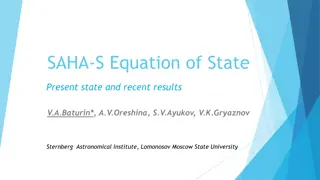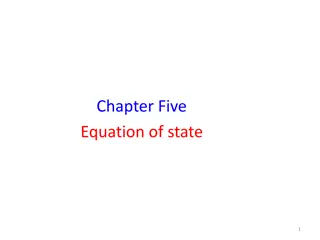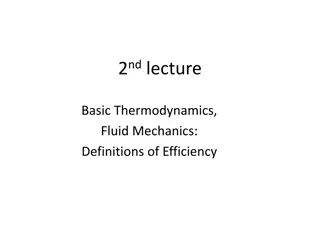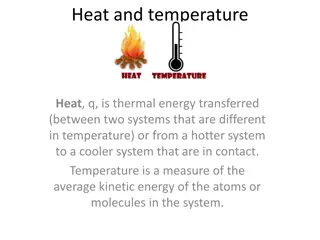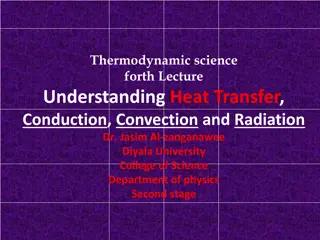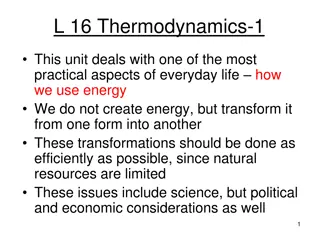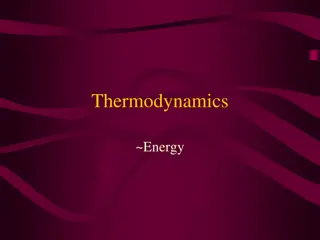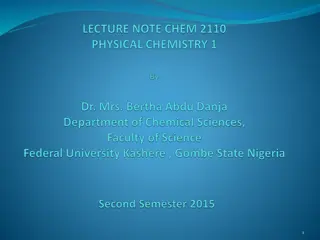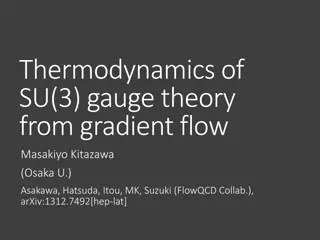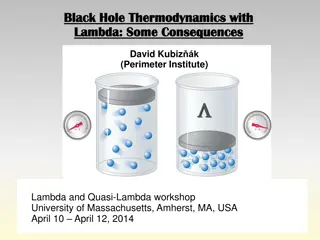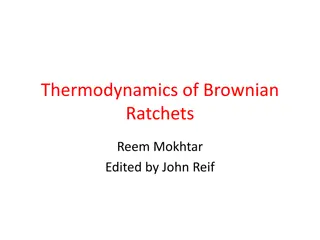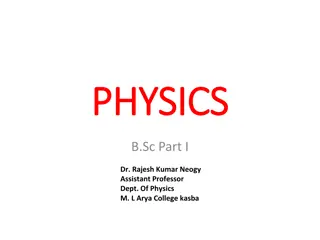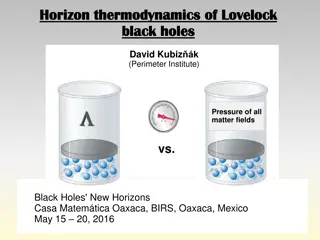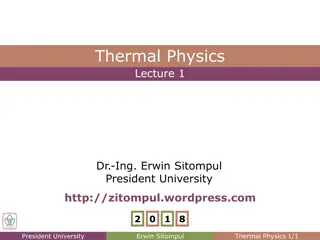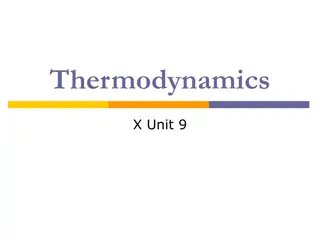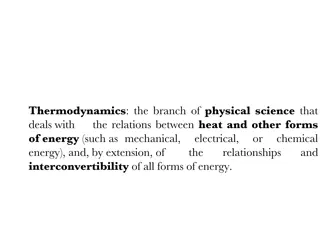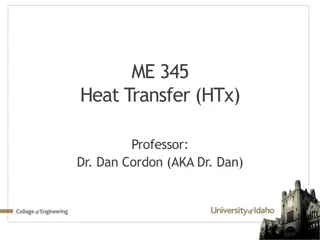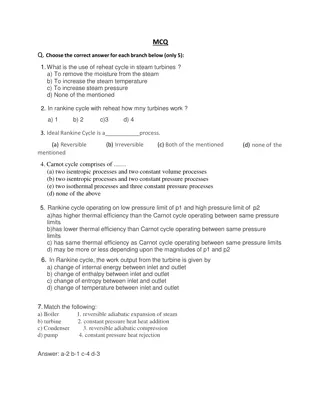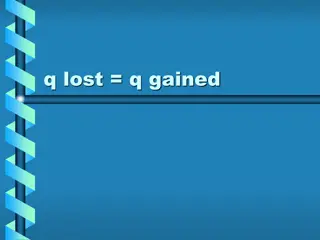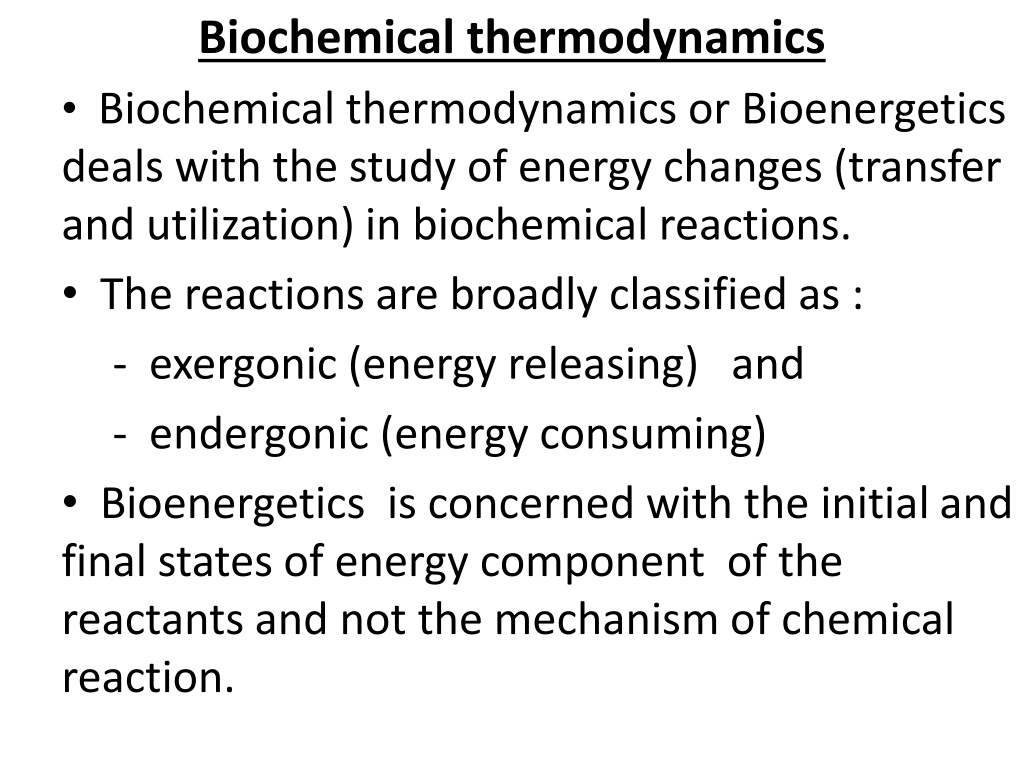
Understanding Biochemical Thermodynamics and Bioenergetics
Delve into the fascinating realm of biochemical thermodynamics and bioenergetics, which focus on energy changes in biochemical reactions such as exergonic and endergonic processes. Explore concepts like free energy, enthalpy, entropy, and their interrelations to predict the feasibility of chemical reactions.
Download Presentation

Please find below an Image/Link to download the presentation.
The content on the website is provided AS IS for your information and personal use only. It may not be sold, licensed, or shared on other websites without obtaining consent from the author. Download presentation by click this link. If you encounter any issues during the download, it is possible that the publisher has removed the file from their server.
E N D
Presentation Transcript
Biochemical thermodynamics Biochemical thermodynamics or Bioenergetics deals with the study of energy changes (transfer and utilization) in biochemical reactions. The reactions are broadly classified as : - exergonic (energy releasing) and - endergonic (energy consuming) Bioenergetics is concerned with the initial and final states of energy component of the reactants and not the mechanism of chemical reaction.
Free Energy : (G) The energy actually available to do work is known as free energy. Changes in the free energy ( G) are valuable in predicting the feasibility of chemical reactions. The reactions can occur spontaneously if they are accompanied by decrease in free energy. During a chemical reaction, heat may be released or absorbed.
Enthalpy (H) is a measure of the change in heat content of the reactants, compared to products. Entropy ( S) represents a change in the randomness or disorder of reactants and products. Entropy attains a maximum as the reaction approaches equilibrium. The reactions of biological systems involve a temporary decrease in entropy.
The relation between the changes of free energy ( G), enthalpy ( H) and entropy ( S) is expressed as G = H T S T represents the absolute temperature in Kelvin (K= 273 + C). The term standard free energy represented by G is often used. It indicates the free energy change when the reactants or products are at a concentration of 1 mol/l at pH 7.0
Negative and positive G : lf free energy change ( G) is represented by a negative sign, there is a loss of free energy. The reaction is said to be exergonic, and proceeds spontaneously. On the other hand, a positive G indicates that energy must be supplied to the reactants. The reaction cannot proceed spontaneously and is endergonic in character.
The hydrolysis of ATP is a classical example of exergonic reaction ATP + H2O -- ADP + Pi ( G = - 7.3 Cal/mol) The reversal of the reaction ADP + Pi -- ATP is endergonic and occurs only when there is a supply of energy of at least 7.3 Cal/mol ( G is positive). The free energy change becomes zero ( G = 0) when a reaction is at equilibrium.
At a constant temperature and pressure,G is dependent on the actual concentration of reactants and products. For the conversion of reactant A to product B (A -- B), the following mathematical relation can be derived : G = G + Rt ln [B]/[A] Where G = Standard free energy change R = Gas constant (1.987 Cal/mol) T = Absolute temperature( 273 +'C) In = Natural logarithm [B] = Concentration of product [A] = Concentration of reactant.
When a reaction A (eq.), the free energy change is zero. The above equation may be written as : G = 0 = G + Rt ln [B]eq. /[A]eq. Hence G = - RT In Keq. B is at equilibrium


